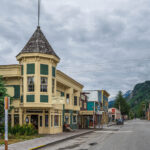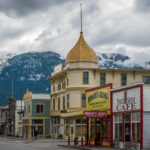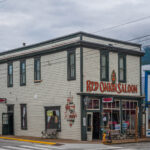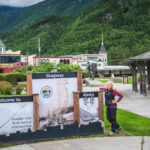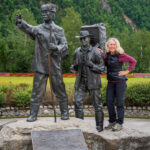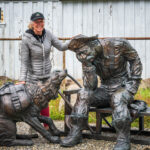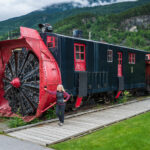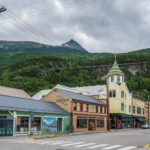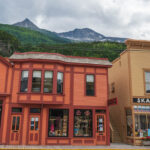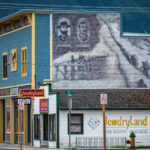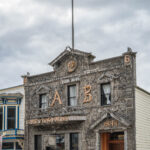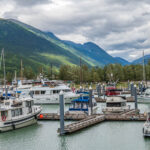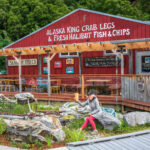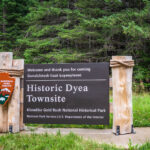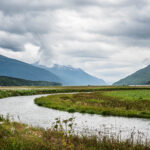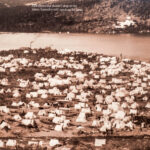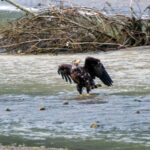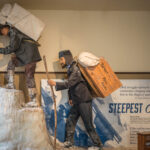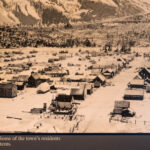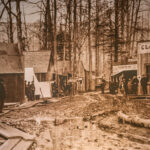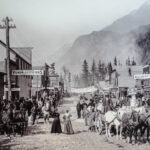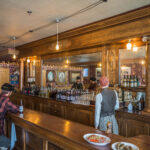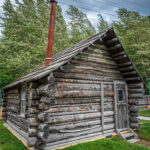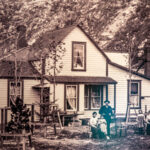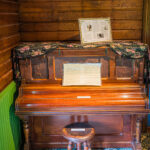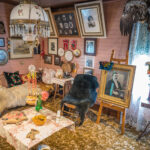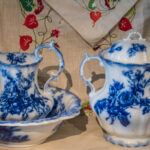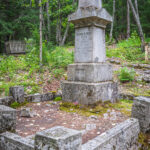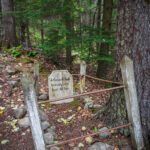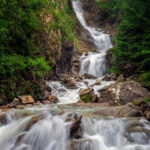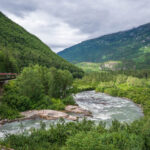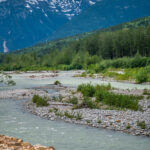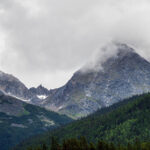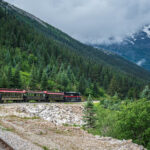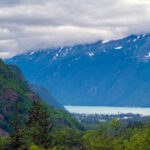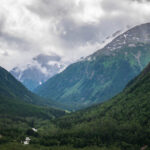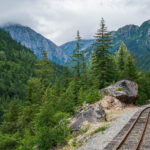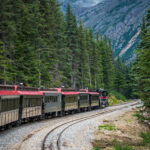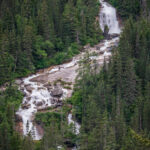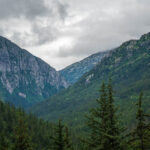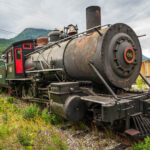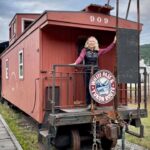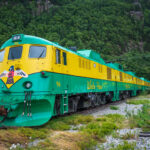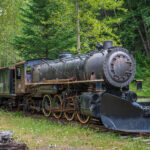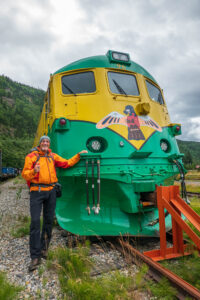
Skagway was originally spelled S-K-A-G-U-A, a Tlinglit word for “windy place”. The first people in this area were Tlinglits from the Chilkoot village in the Haines area. The windy Skagway valley was good for hunting mountain goats and bear, but no one settled here until 1887. After arriving in Skagway we checked into the White House Inn, built in 1902 by gambler Lee Guthrie. It was the finest home in Skagway, and we had a beautiful, large room on the first floor with picture windows. Our first stop in Skagway was to the Red Onion Saloon for pizza and beer. It was built in 1897 during the height of the Gold Rush, the Red Onion Saloon operated as one of the finest Bordellos in town, and you can visit the brothel museum for a link to the past. Racey, old-timey portraits of alluring women still adorn the walls of the Red Onion Saloon and the ghost of Lydia, a former Madame, still haunts the place. Then we explored Skagway and saw beautiful bronze statues. The Skagway Centennial Statue honors the Tlingit packers made famous during the Klondike Gold Rush of 1897-1898, located in a small park at the end of Broadway Avenue. This sculpture represents a typical scene at the start of Chilkoot Trail or White Pass trails in August 1897. The Tlinglit packer wears traditional clothing, made of moosehide and bear fur, and carries a pack from the skin of a mountain goat. He leads a young stampeder, just off a ship, who is determined to reach the gold fields. His pack is a wood-frame box, and outside are strapped his hunting knife, shovel and gold pan. Another bronze sculpture we saw was of a prospector and his dog outside the Alaska Geographic Museum. In the Centennial Park we saw the historic Rotary Snowplow, this is the retired snow plow used by the White Pass & Yukon Railroad: Rotary Snow Plow Number 11. The plow spins its huge blades and throws snow to the side. It was built in 1898 and cleared the tracks until 1964. It was restored in 1995 and displayed for all to see. Click on thumbnail to view images
Skagway
Historic Skagway
Skagway has an interesting history because of the Klondike Gold Rush from 1897-1898, and we decided to explore more of its history. We drove out to the site where Dyea on the Taiya River Inlet, was once a thriving town with over 5,000 people, but now a ghost town. During the Gold Rush days the Stampeders began their trek from here on the Chilkoot Trail to the gold fields 500 miles away. We visited the Museum in Skagway depicting the town during the Gold Rush days and took several pictures from that era. The founder of Skagway was Captain William Moore who came to the Skagway valley with a Canadian survey team in the spring of 1887. He was impressed by what he saw that he returned in October that year with his son, Ben, to stake a 160-acre homestead in the Skagway valley, and laid a foundation for a cabin and began building a wharf. He believed that gold in large quantities would be found, and had a vision that Skagway, with its deep-water harbor and trail through the White Pass, would become the gateway to those gold fields, the “Gateway to the Klondike Gold Rush”. Our final visit was to explore the Gold Rush Cemetery where the old tombstones are still standing. Click on thumbnail to view images
White Pass and Yukon RR
The White Pass & Yukon Railroad was built in 1898 during the Gold Rush from 1897-1898 days. The tour on this historic and breathtaking narrow gauge railroad, is a 65-mile journey into the Yukon. We began this adventure on the docks of Skagway and climbed the South Klondike Highway to the top of the White Pass 3,292 feet. Unfortunately for us the railroad track was closed for repairs, so we only got about halfway up to the White Pass. We saw beautiful views of the Skagway valley from the train as we began the climb. The mountain vistas were impressive and the scenery along the railroad was worth the short ride. We will have to come back again to complete the adventure. Click on thumbnail to view images



